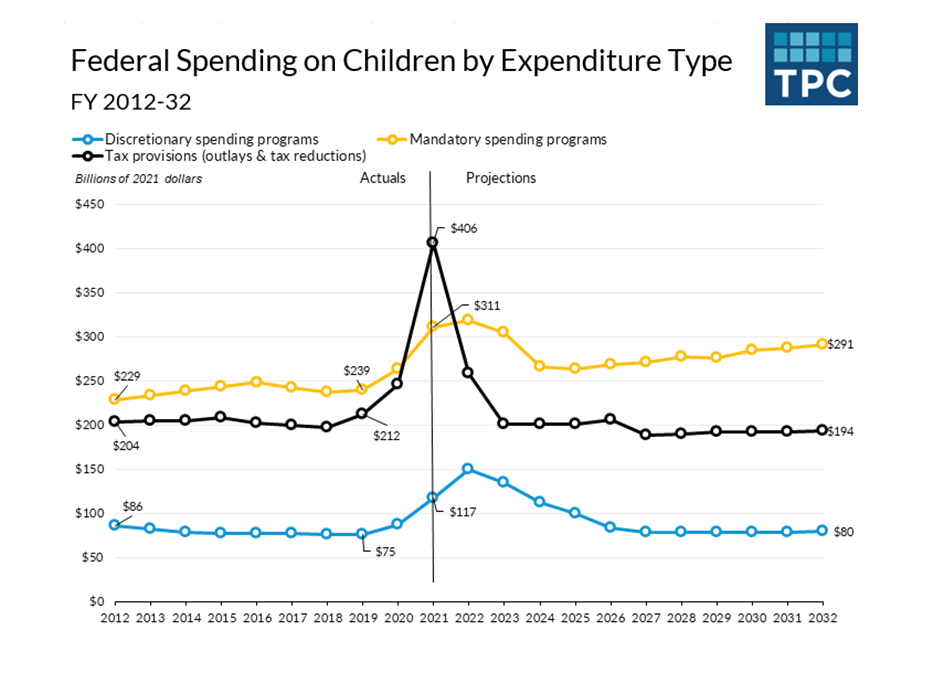Breaching The Debt Limits Risks Hurting Children
In a year when child poverty has risen substantially following the expiration of temporary tax benefits, Washington intransigence over raising the debt ceiling could put children at even greater risk.
In general, children benefit from three types of federal programs: tax credits, discretionary spending programs, and mandatory spending programs. House Republicans have vowed to oppose any increase in the debt limit without spending cuts. Where those cuts could come from appears to be a pretty slim piece of the budget that has the potential to impact children – who benefit from programs that are already projected to shrink according to Urban Institute analysis.
The debt limit is the amount of money that the United States government can borrow to pay for programs that have already been approved by Congress. That ceiling was hit mid-January, but Secretary Yellen has said the government can continue to pay its obligations – possibly through June –with accounting maneuvers known as “extraordinary measures.”
But then what?
If the debt ceiling is not raised, Congress would need to cut spending or increase taxes by $1.5 trillion this year. That’s a lot of money, and it would be difficult to find under any circumstances.
Some are pledging to protect some mandatory programs like Social Security and Medicare. These entitlement programs mostly benefit seniors and adults and are projected to account for a growing share of the federal budget over the next decade.
That pledge puts the burden solely on discretionary programs – those programs that are funded via the appropriations process. That’s bad news for children because many important programs for health, education, housing, and community services fall into this category.
Even without further cuts, the Urban Institute’s Kid’s Share analysis suggests spending on children will decline as a share of all federal spending over the next few years. That decline stems from the expiration of the enhanced child tax credit (CTC) and drops in discretionary programs, which include education, childcare, and housing assistance.
Over the next decade, the kids’ share of federal spending is expected to decline to 6.4 percent because of economywide growth in healthcare costs, aging demographics, and growing interest payments on the national debt. That’s an almost one-third reduction on the share of the budget spent on children.
Creating uncertainty over children’s programs can add further stress to families at a time when many are already struggling. It also lacks foresight since it reduces investments in the portion of the population with the greatest potential to support our country’s future growth.
Lifting the debt ceiling would allow Congress to alleviate these stresses and make good on its promises.






